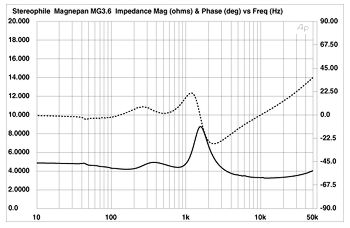Nope, "The Smokester" ain't blowing smoke this time; he got it right. 
Ohm's Law: I = V / R == current (Amperes) = voltage (Volts) divided by resistance (Ohms)
Lower resistance means more amps are needed for the same voltage, and most of our sources and loads are more voltage'ish than current'ish.
Pro audio systems typically work with 600 ohm impedances in a balanced configuration. While the mixer/preamp output is often low-impedance (1 - 10 ohms), the load is only 600 ohms (effective). A consumer audio component typically has input (load) impedance >10k ohms, often approaching 100k ohms. Lower impedance improves bandwidth and reduces noise sensitivity in the long runs often found in pro installations/stage setups, and of course live sound guys (like I used to be) rarely get to run the cables where they would sound best so a lot of times alongside the power cords they go... Yuch!
HTH - Don
p.s. Thanks for the kudos, y'all! Every now and then the thread turns to something I actually know a smidgen about...
Ohm's Law: I = V / R == current (Amperes) = voltage (Volts) divided by resistance (Ohms)
Lower resistance means more amps are needed for the same voltage, and most of our sources and loads are more voltage'ish than current'ish.
Pro audio systems typically work with 600 ohm impedances in a balanced configuration. While the mixer/preamp output is often low-impedance (1 - 10 ohms), the load is only 600 ohms (effective). A consumer audio component typically has input (load) impedance >10k ohms, often approaching 100k ohms. Lower impedance improves bandwidth and reduces noise sensitivity in the long runs often found in pro installations/stage setups, and of course live sound guys (like I used to be) rarely get to run the cables where they would sound best so a lot of times alongside the power cords they go... Yuch!
HTH - Don
p.s. Thanks for the kudos, y'all! Every now and then the thread turns to something I actually know a smidgen about...








